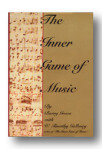1.) Plaques with rounded edges are less likely to damage the sides of a reed when inserted. A pointed edge is more apt to tear a piece of cane than a rounded edge, especially if one of the points is bent.
2.) A darker colored plaque is easier to see through the blades of a reed. This is particularly helpful when working on the tip, as you want to ensure that the thinnest part of the tip is the very top corners. The thinner the area, the more the darkness of the plaque will show through.
3.) Wooden plaques are less common and are generally not flat; instead, they are raised in the center. These plaques can cause the reed to have loose sides, as they push the blades of the reed apart when inserted. They should be avoided.
4.) The newest kind of plaque is backlit and rather expensive. Once inserted between the blades, a small light illuminates the inside of the reed to show the thickest and thinnest areas.
Here at Double or Nothing Reeds, we use rounded steel plaques. If you’re trying to decide which is best for you, we recommend you buy a few and experiment! (With the exception of the backlit plaques, they are all fairly inexpensive).
Happy Reedmaking!





